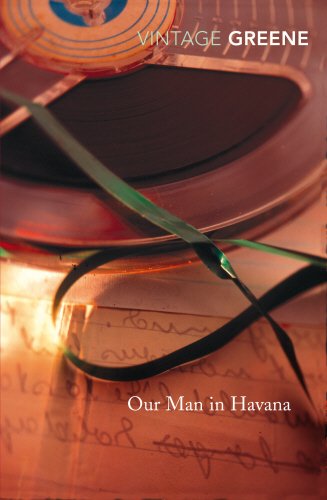GRAHAM Greene visited Cuba several times during the 1950s and 1960s and his comic novel Our Man in Havana was published on October 6, 1958, not long before Fidel Castro’s guerrillas took Cuba’s capital on New Year’s Day 1959.
The book’s protagonist is a slightly gormless vacuum cleaner salesman, Mr Wormwold, who turns to spying to help pay his bills, not anticipating how tangled his affairs would soon become as a result of his espionage.
Within the book Greene uses many specific locations, mentioning the Tropicana Club (caberet-tropicana.com), the Seville-Biltmore Hotel (now simply Hotel Sevilla, hotelsevilla-cuba.com) and the Hotel Nacional (hotelnacionaldecuba.com). During his stays he often dined at the famous Floradita restaurant-bar (floridita-cuba.com), a haunt of another well-known literary visitor to Havana: Ernest Hemingway.
So there is a Graham Greene trail of sorts within the Cuban capital, which the author enjoyed for its seedy side. “Suddenly it struck me that here in this extraordinary city, where every vice was permissible and every trade possible, lay the true background for my comedy,” Greene writes in his autobiography Ways of Escape.
He was certainly no stranger to the city’s less savory appeals: “I came there . . . for the sake of the Floridita restaurant (famous for daiquiris and Morro crabs), for the brothel life, the roulette in every hotel, the fruit machines spilling out jackpots of silver dollars, the Shanghai Theatre, where for one dollar and twenty-five cents one could see a nude cabaret of extreme obscenity with the bluest of blue films in the intervals.”
Hotel Nacional features regularly within Our Man in Havana – which was turned into a film starring Alec Guinness and Noel Coward in 1959. The grand structure, built in the late 1920s, stands in a prominent position on the Loma de Taganana promontory. It is at the hotel that a key scene towards the end of the novel is set, with Mr Wormwold attending a dinner in which he fears that his drinks may be spiked in order to bump him off.
Greene describes him making his way through a lounge lined with “show-cases full of Italian shoes and Danish ashtrays and Swedish glass and mauve British socks” – it was before Castro’s communism and Cuba was much more open to the wider world. Greene was just one of many famous international guests, who also numbered Errol Flynn, Winston Churchill (who stayed in the Republica Suite), the Duke and Duchess of Windsor, Rita Hayworth, and Frank Sinatra.
Greene took his research in Cuba to great lengths. After an evening of watching “Superman’s performance with a mulatto girl (as uninspiring as a dutiful husband’s)”, losing at roulette, smoking a joint and watching a lesbian performance at the Blue Moon, he requested that his driver provide him with cocaine. A white powder was swiftly procured though it had no effect other than inducing the odd sneeze. “We had been sold – at what now appeared an exorbitant price – a little boracic powder,” Greene recalls in Ways of Escape.
In his introduction to Vintage Classic’s edition of Our Man in Havana, the writer Christopher Hitchens revels in the old-fashioned, frozen-in-time feel of Havana depicted in the novel, commenting that it is likely to remain “until the day when the dam breaks and the full tide of Americanization flows in”.
Perhaps that day, with President Obama’s “new chapter”, has come.


Comments are closed.